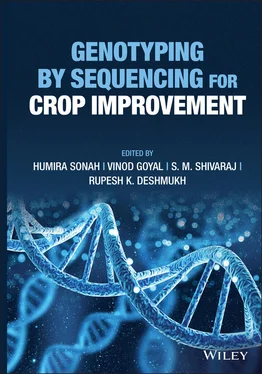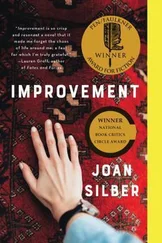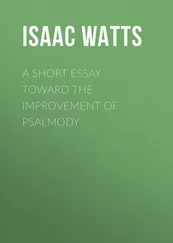Genotyping by Sequencing for Crop Improvement
Здесь есть возможность читать онлайн «Genotyping by Sequencing for Crop Improvement» — ознакомительный отрывок электронной книги совершенно бесплатно, а после прочтения отрывка купить полную версию. В некоторых случаях можно слушать аудио, скачать через торрент в формате fb2 и присутствует краткое содержание. Жанр: unrecognised, на английском языке. Описание произведения, (предисловие) а так же отзывы посетителей доступны на портале библиотеки ЛибКат.
- Название:Genotyping by Sequencing for Crop Improvement
- Автор:
- Жанр:
- Год:неизвестен
- ISBN:нет данных
- Рейтинг книги:4 / 5. Голосов: 1
-
Избранное:Добавить в избранное
- Отзывы:
-
Ваша оценка:
- 80
- 1
- 2
- 3
- 4
- 5
Genotyping by Sequencing for Crop Improvement: краткое содержание, описание и аннотация
Предлагаем к чтению аннотацию, описание, краткое содержание или предисловие (зависит от того, что написал сам автор книги «Genotyping by Sequencing for Crop Improvement»). Если вы не нашли необходимую информацию о книге — напишите в комментариях, мы постараемся отыскать её.
A thoroughly up-to-date exploration of genotyping-by-sequencing technologies and related methods in plant science Genotyping by Sequencing for Crop Improvement,
Genotyping by Sequencing for Crop Improvement
Genotyping by Sequencing for Crop Improvement
Genotyping by Sequencing for Crop Improvement — читать онлайн ознакомительный отрывок
Ниже представлен текст книги, разбитый по страницам. Система сохранения места последней прочитанной страницы, позволяет с удобством читать онлайн бесплатно книгу «Genotyping by Sequencing for Crop Improvement», без необходимости каждый раз заново искать на чём Вы остановились. Поставьте закладку, и сможете в любой момент перейти на страницу, на которой закончили чтение.
Интервал:
Закладка:
17 Hellwege, J.N., Keaton, J.M., Giri, A. et al. (2017). Population stratification in genetic association studies. Current Protocols in Human Genetics 95: 1.22.21–21.22.23.
18 Hill, J.T., Demarest, B.L., Bisgrove, B.W. et al. (2013). MMAPPR: mutation mapping analysis pipeline for pooled RNA‐seq. Genome Research 23: 687–697.
19 Huang, X., Feng, Q., Qian, Q. et al. (2009). High‐throughput genotyping by whole‐genome resequencing. Genome Research 19: 1068–1076.
20 Klein, H., Xiao, Y., Conklin, P.A. et al. (2018). Bulked‐segregant analysis coupled to whole genome sequencing (BSA‐Seq) for rapid gene cloning in maize. G3: Genes. Genomes, Genetics 8: 3583–3592.
21 Kumawat, S., Rana, N., Bansal, R. et al. (2019). Expanding avenue of fast neutron mediated mutagenesis for crop improvement. Plants 8: 164.
22 Li, C., Tian, D., Tang, B. et al. (2021). Genome variation map: a worldwide collection of genome variations across multiple species. Nucleic Acids Research 49: D1186–D1191.
23 Li, J.‐Y., Wang, J., and Zeigler, R.S. (2014). The 3,000 rice genomes project: new opportunities and challenges for future rice research. Gigascience 3: 8.
24 Liang, Z., Duan, S., Sheng, J. et al. (2019). Whole‐genome resequencing of 472 Vitis accessions for grapevine diversity and demographic history analyses. Nature communications 10: 1–12.
25 Lin, Y.‐L., Wu, D.‐H., Wu, C.‐C. et al. (2021). Explore the genetics of weedy traits using rice 3K database. Botanical Studies 62: 2.
26 Locedie, M., Rommel, F.R., Nikki, B.F. et al. (2016). Rice SNP‐seek database update: new SNPs, indels, and queries. Nucleic Acids Research 45: D1075–D1081.
27 Loera‐Sánchez, M., Studer, B., and Kölliker, R. (2019). DNA‐based assessment of genetic diversity in grassland plant species: challenges, approaches, and applications. Agronomy 9: 881.
28 Mushtaq, M., Mukhtar, S., Sakina, A. et al. (2019). Tweaking genome‐editing approaches for virus interference in crop plants. Plant Physiology and Biochemistry 147: 242–250.
29 Norton, N., Williams, N., O'Donovan, M. et al. (2004). DNA pooling as a tool for large‐scale association studies in complex traits. Annals of Medicine 36: 146–152.
30 Patil, G., Vuong, T.D., Kale, S. et al. (2018). Dissecting genomic hotspots underlying seed protein, oil, and sucrose content in an interspecific mapping population of soybean using high‐density linkage mapping. Plant Biotechnology Journal 16: 1939–1953.
31 Patil, G.B., Lakhssassi, N., Wan, J. et al. (2019). Whole‐genome re‐sequencing reveals the impact of the interaction of copy number variants of the rhg1 and Rhg4 genes on broad‐based resistance to soybean cyst nematode. Plant Biotechnology Journal 17: 1595–1611.
32 Pawlowski, M.L., Vuong, T.D., Valliyodan, B. et al. (2020). Whole‐genome resequencing identifies quantitative trait loci associated with mycorrhizal colonization of soybean. Theoretical and Applied Genetics 133: 409–417.
33 Rana, N., Rahim, M.S., Kaur, G. et al. (2019). Applications and challenges for efficient exploration of omics interventions for the enhancement of nutritional quality in rice (Oryza sativa L.). Critical Reviews in Food Science and Nutrition 13: 1–17.
34 Rasoolizadeh, A., Labbé, C., Sonah, H. et al. (2018). Silicon protects soybean plants against Phytophthora sojae by interfering with effector‐receptor expression. BMC Plant Biology 18: 97.
35 Ratnaparkhe, M.B., Marmat, N., Kumawat, G. et al. (2020). Whole genome re‐sequencing of soybean accession EC241780 providing genomic landscape of candidate genes involved in rust resistance. Current Genomics 21: 504–511.
36 Schmutz, J., Cannon, S.B., Schlueter, J. et al. (2010). Genome sequence of the palaeopolyploid soybean. Nature 463: 178–183.
37 Sevanthi, A., Kandwal, P., Kale, P.B. et al. (2018). Whole genome characterization of a few EMS‐induced mutants of upland rice variety Nagina 22 reveals a staggeringly high frequency of SNPs which show high phenotypic plasticity towards the wild‐type. Frontiers in Plant Science 9: 1179.
38 Sham, P., Bader, J.S., Craig, I. et al. (2002). DNA pooling: a tool for large‐scale association studies. Nature Reviews Genetics 3: 862–871.
39 Sharma, A., Kailasrao Deshmukh, R., Jain, N. et al. (2011). Combining QTL mapping and transcriptome profiling for an insight into genes for grain number in rice (Oryza sativa L.). Indian Journal of Genetics and Plant Breeding 71: 115.
40 Shivaraj, S., Dhakate, P., Sonah, H. et al. (2019). Progress toward development of climate‐smart flax: a perspective on omics‐assisted breeding. In: Genomic Designing of Climate‐Smart Oilseed Crops, 239–274. Cham: Springer.
41 Singh, A., Singh, P.K., Sharma, A.K. et al. (2019). Understanding the role of the WRKY gene family under stress conditions in pigeonpea (Cajanus Cajan L.). Plants 8: 214.
42 Sonah, H., O'Donoughue, L., Cober, E. et al. (2015). Identification of loci governing eight agronomic traits using a GBS‐GWAS approach and validation by QTL mapping in soya bean. Plant Biotechnology Journal 13: 211–221.
43 Sonah, H., Zhang, X., Deshmukh, R.K. et al. (2016). Comparative transcriptomic analysis of virulence factors in Leptosphaeria maculans during compatible and incompatible interactions with canola. Frontiers in Plant Science 7: 1784.
44 Tayade, R., Nguyen, T., Aeong Oh, S. et al. (2018). Effective strategies for enhancing tolerance to high‐temperature stress in rice during the reproductive and ripening stages. Plant Breeding and Biotechnology 6: 1–18.
45 Unamba, C.I., Nag, A., and Sharma, R.K. (2015). Next generation sequencing technologies: the doorway to the unexplored genomics of non‐model plants. Frontiers in Plant Science 6: 1074.
46 Varshney, R.K., Saxena, R.K., Upadhyaya, H.D. et al. (2017). Whole‐genome resequencing of 292 pigeonpea accessions identifies genomic regions associated with domestication and agronomic traits. Nature Genetics 49: 1082.
47 Varshney, R.K., Thudi, M., Roorkiwal, M. et al. (2019). Resequencing of 429 chickpea accessions from 45 countries provides insights into genome diversity, domestication and agronomic traits. Nature Genetics 51: 857–864.
48 Vasupalli, N., Koramutla, M.K., Aminedi, R. et al. (2020). Omics approaches and biotechnological perspectives of arsenic stress and detoxification in plants. In: Metalloids in Plants: Advances and Future Prospects, 249–273. Wiley.
49 Vats, S., Kumawat, S., Kumar, V. et al. (2019). Genome editing in plants: exploration of technological advancements and challenges. Cells 8: 1386.
50 Weigel, D. and Mott, R. (2009). The 1001 genomes project for Arabidopsis thaliana. Genome Biology 10: 1–5.
51 Xie, W., Feng, Q., Yu, H. et al. (2010). Parent‐independent genotyping for constructing an ultrahigh‐density linkage map based on population sequencing. Proceedings of the National Academy of Sciences of the United States of America 107: 10578–10583.
52 Xu, X., Zeng, L., Tao, Y. et al. (2013). Pinpointing genes underlying the quantitative trait loci for root‐knot nematode resistance in palaeopolyploid soybean by whole genome resequencing. Proceedings of the National Academy of Sciences of the United States of America 110: 13469–13474.
53 Yu, Y., Fu, J., Xu, Y. et al. (2018). Genome re‐sequencing reveals the evolutionary history of peach fruit edibility. Nature Communications 9: 1–13.
54 Yuan, J., Wang, X., Zhao, Y. et al. (2020). Genetic basis and identification of candidate genes for salt tolerance in rice by GWAS. Scientific Reports 10: 9958.
55 Zargar, S.M., Raatz, B., Sonah, H. et al. (2015). Recent advances in molecular marker techniques: insight into QTL mapping, GWAS and genomic selection in plants. Journal of Crop Science and Biotechnology 18: 293–308.
Читать дальшеИнтервал:
Закладка:
Похожие книги на «Genotyping by Sequencing for Crop Improvement»
Представляем Вашему вниманию похожие книги на «Genotyping by Sequencing for Crop Improvement» списком для выбора. Мы отобрали схожую по названию и смыслу литературу в надежде предоставить читателям больше вариантов отыскать новые, интересные, ещё непрочитанные произведения.
Обсуждение, отзывы о книге «Genotyping by Sequencing for Crop Improvement» и просто собственные мнения читателей. Оставьте ваши комментарии, напишите, что Вы думаете о произведении, его смысле или главных героях. Укажите что конкретно понравилось, а что нет, и почему Вы так считаете.












